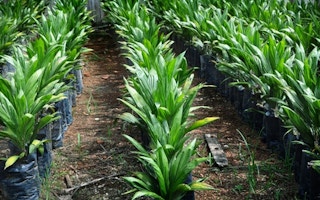Malaysia will be developing its own drought-resistance breed of oil palm that could withstand several seasons of dry spell, including El Nino within 10 years.
International Society for Oil Palm Breeders (ISOPB) President Dr Ahmad Kushairi said no efforts were made to produce a drought-resistance breed in Malaysia before as the climate then did not warrant such development.
“There are currently initiatives in developing drought-resistance breeds in other parts of the world. In Malaysia, it (developing process) is only at the initial stage (of development) at the moment.
“We have just started looking into the genetic material (of the development),” he told reporters at the International Seminar on Gearing Oil Palm Breeding and Agronomy for Climate Change here, today.
Previously, he said Malaysia imported drought-resistance breeds from the African and North and Central American regions.
In his welcoming remarks, Kushairi said as the current extreme and unpredictable weather had affected food crops, there was a need to address climate change in relation to palm oil productivity.
“We also need to be prepared for the consequences of extreme weather, thus, gearing efforts in breeding and agronomy for sustainable agriculture,” he added.
Officiated by Malaysian Palm Oil Board (MPOB) Director-General Datuk Dr Choo Yuen May, the one-day seminar was jointly organised by the MPOB, ISOPB, and International Society of Oil Palm Agronomists.
In her speech, Choo called on palm oil players and related parties to cooperate in order to take the industry to greater heights, surpassing the competitiveness of other competing oils and fats.
“Like other palm oil producing countries, the strategy for oil palm to remain relevant in Malaysia is to improve productivity within the available land resources.
“Under the National Key Economic Area initiative, the plantation sector is tasked with increasing the national average fresh fruit bunch yield to 26.2 tonnes pr hectare per year, while the milling sector is required to yield 23 per cent oil extraction rate,” she said.
Last year, Malaysia produced 19.67 million tonnes of crude palm oil, while the export of palm oil and palm oil products was valued at RM63.6 billion, with India and China being the largest importers.










